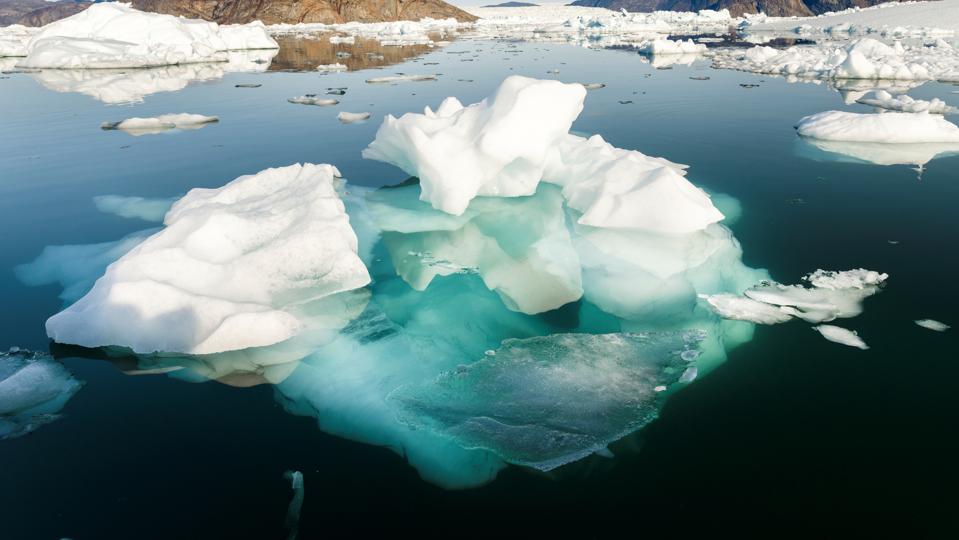Huge Chunk Of Greenland's Ice Cap Breaks Off
by Tommy BeerTopline
An enormous chunk of Greenland's ice cap measuring approximately 42.3 square miles has broken off in the far northeastern Arctic, the National Geological Survey of Denmark and Greenland said Monday, which scientists believe is further confirmation of the earth's rapidly changing climate.

Key Facts
The enormous glacier section broke off of a fjord called Nioghalvfjerdsfjorden, which is roughly 50 miles (80 kilometers) long and 12 miles (20 kilometers) wide and is now adrift—and melting—in the Northeast Greenland Ice Stream.
This chunk accounts for two-thirds of ice the shelf has lost over the last 20 years (a total of 62 square miles, which is roughly twice the size of the island of Manhattan.)
"We should be very concerned about what appears to be progressive disintegration at the Arctic's largest remaining ice shelf," Geological Survey of Denmark and Greenland professor Jason Box told the Associated Press.
Changes in the Arctic's largest ice shelf in Northeast Greenland are measured by optical satellite imagery, which increases the resolution of images captured.
According to a recent study published by the National Oceanic and Atmospheric Administration, ice loss from the Greenland ice sheet increased sevenfold from 34 billion tons a year from 1992 to 2001 to 247 billion tons a year from 2012 to 2016.
The danger inherent in melting glaciers is that they add to rising sea levels, which lead to increases in coastal erosion, and as ocean temperatures increase, so do the frequency of coastal storms like hurricanes and typhoons.
Crucial Quote:
"Another massive chunk of vital sea ice has fallen into the ocean," said Greenpeace spokeswoman Laura Meller. "This is yet another alarm bell being rung by the climate crisis in a rapidly heating Arctic."
Key Background:
A study published last month found that the Greenland Ice Sheet is losing mass at accelerated rates, making it the largest single contributor to rising sea levels. "Glacier retreat has knocked the dynamics of the whole ice sheet into a constant state of loss," the study's co-author, Ian Howat, an earth scientist from Ohio State University, said in a statement. "Even if the climate were to stay the same or even get a little colder, the ice sheet would still be losing mass." A separate study published in August in the journal Communications Earth & Environment found that "Greenland lost a record amount of ice during an extra warm 2019, with the melt massive enough to cover California in more than four feet (1.25 meters) of water."
Tangent:
The Washington Post reported Sunday that the Trump administration appointed David Legates, "an academic who has long questioned the scientific consensus that human activity is causing global warming," to help run the agency that produces much of the climate research funded by the U.S. government. Legates, who was previously forced out of his role as Delaware's climatologist due to his controversial views, has taken a senior leadership role at the National Oceanic and Atmospheric Administration, according to the Post's report.
Big Number:
586 Billion Tons: That's the amount of ice that melted in the summer of 2019, shattering the all-time record.
Further Reading:
Dismay as huge chunk of Greenland's ice cap breaks off (AP)
Record melt: Greenland lost 586 billion tons of ice in 2019 (AP)